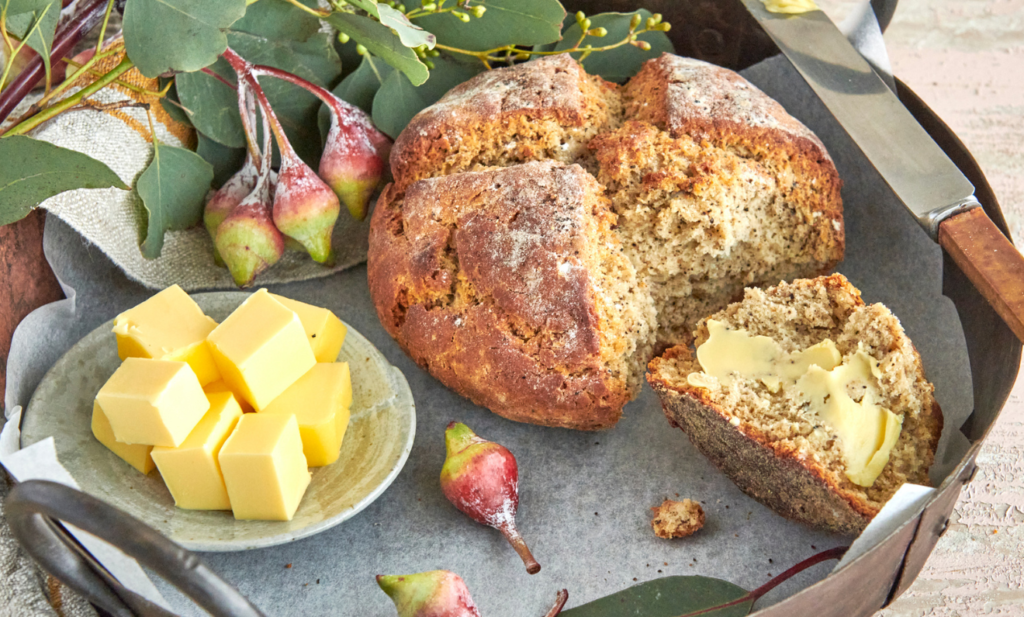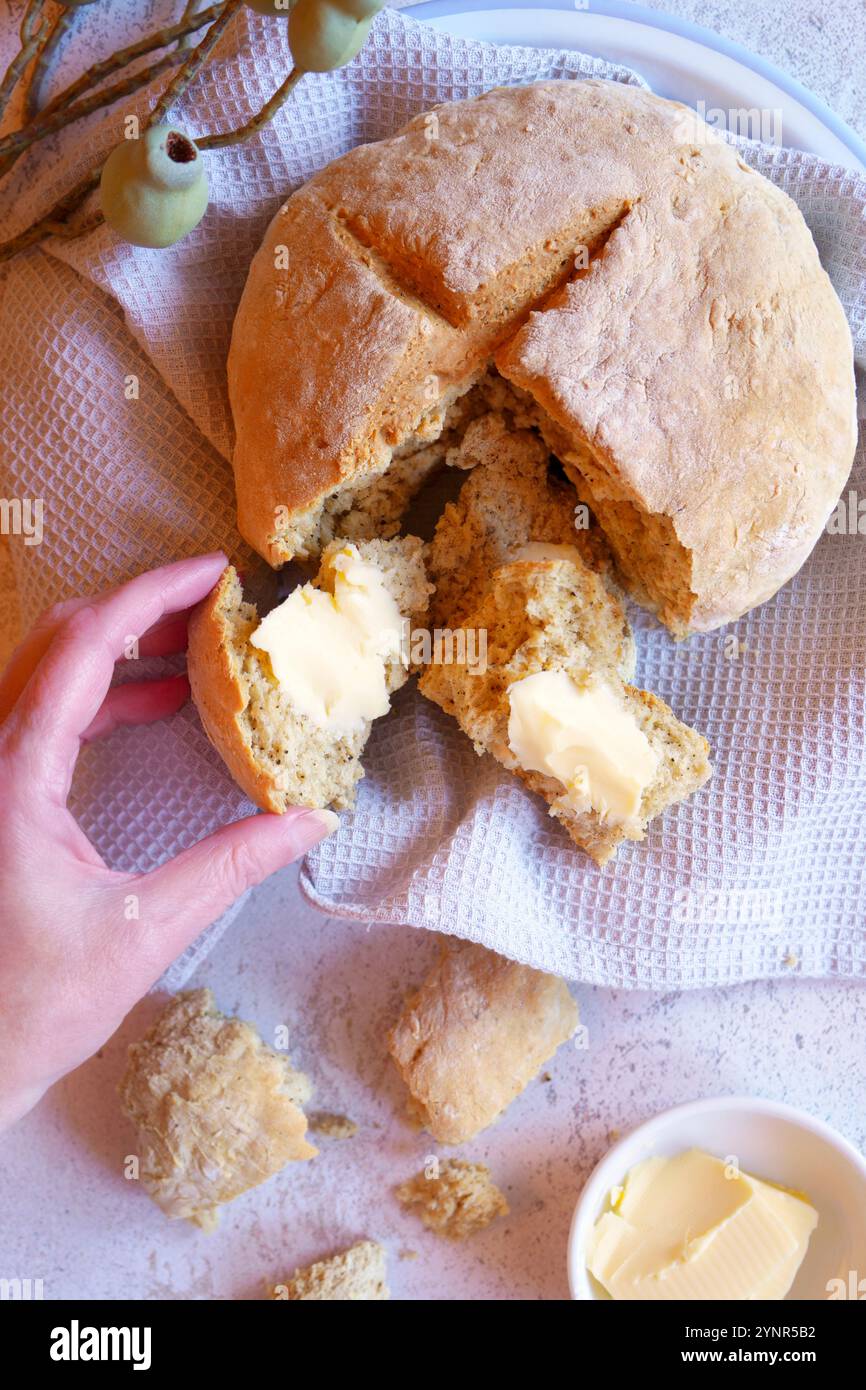
Wattle Seed Damper Bread: A Taste of Ancient Australia
The Australian landscape, vast and ancient, holds within it a rich tapestry of flavors and traditions. Among these, the humble damper bread stands as a testament to the ingenuity and resilience of its people, particularly Indigenous Australians who have utilized its core ingredients for millennia. And when you infuse this classic bread with the unique, nutty aroma of wattle seeds, you unlock a culinary experience that is both deeply rooted in history and surprisingly contemporary. Wattle seed damper bread is more than just a loaf; it’s a connection to the land, a celebration of bush tucker, and a delicious journey into the heart of Australian identity.
The Essence of Damper: Simplicity and Survival
At its core, damper is a no-fuss, no-yeast bread traditionally made by drovers, stockmen, and early settlers traversing the rugged Australian outback. Its beauty lies in its simplicity: flour, water, and salt, often cooked in the embers of a campfire. This basic recipe was a lifesaver, providing essential sustenance with minimal ingredients and equipment. The flour used was typically plain wheat flour, readily available or milled from wheat grown in the harsh Australian climate. The water was sourced from whatever reliable waterhole or creek was available, and salt was a crucial preservative and flavor enhancer.

The cooking method itself is an integral part of the damper tradition. Often wrapped in damp cloth or foil and placed directly into the coals of a campfire, the bread would slowly cook, developing a dense, slightly chewy interior and a beautifully browned, crisp crust. This method imparted a subtle smoky flavor that is difficult to replicate in a modern oven but remains a cherished memory for many.
Introducing the Wattle Seed: A Native Treasure
The addition of wattle seeds elevates damper from a simple staple to a gourmet delight. Wattle seeds, also known as acacia seeds, are the edible seeds of various acacia species native to Australia. For thousands of years, Indigenous Australians have recognized their nutritional value and unique flavor profile. These seeds are rich in protein, fiber, and essential minerals, making them a valuable food source.
The flavor of wattle seeds is often described as nutty, coffee-like, or chocolatey, with a subtle earthy undertone. When toasted and ground, they release an intoxicating aroma that transforms ordinary flour into something extraordinary. The specific flavor notes can vary depending on the acacia species, but generally, they offer a warmth and complexity that complements the hearty nature of damper perfectly. The toasting process is crucial, as it unlocks the full aromatic potential of the seeds and reduces any potential bitterness.
The Fusion: Wattle Seed Damper Bread Emerges
The marriage of wattle seeds and damper is a natural progression, reflecting a growing appreciation for Australia’s native ingredients and a desire to incorporate them into everyday cuisine. Wattle seed damper bread offers a sophisticated twist on a classic, bringing the distinctive flavors of the bush to the modern kitchen. The nutty, slightly coffee-infused notes of the wattle seeds permeate the bread, creating a depth of flavor that is both comforting and intriguing.
This bread is incredibly versatile. It can be enjoyed on its own, as a simple yet satisfying snack. It pairs beautifully with butter, a dollop of bush honey, or a smear of native fruit jam. For a more substantial meal, it’s the perfect accompaniment to grilled meats, hearty stews, or even as a base for open-faced sandwiches topped with smoked salmon or native Australian cheeses. The slightly dense texture of damper also makes it ideal for dipping into rich gravies or flavorful broths.
Beyond the Plate: Cultural Significance and Modern Appeal

The popularity of wattle seed damper bread extends beyond its delicious taste. It represents a conscious effort to reconnect with Australia’s Indigenous heritage and embrace the bounty of its native flora. As more Australians and international visitors discover the unique flavors of bush tucker, ingredients like wattle seeds are gaining recognition and finding their way into innovative culinary creations.
Wattle seed damper bread is a tangible link to the past, a reminder of the resourcefulness and adaptability of those who first called Australia home. It’s a dish that can be made by anyone, anywhere, and it invites a sense of shared experience and connection to the land. Whether cooked over a campfire on a camping trip or baked in a modern oven in a suburban kitchen, the essence of damper, enhanced by the distinctive aroma of wattle seeds, remains the same: a simple, honest, and deeply satisfying bread.
The modern culinary scene has embraced wattle seeds with enthusiasm. Chefs are experimenting with them in a variety of dishes, from savory sauces and marinades to sweet desserts and baked goods. Wattle seed damper bread is a prime example of this trend, showcasing how a traditional food can be reinterpreted and celebrated for its unique qualities. It’s a testament to the fact that sometimes, the most profound culinary experiences come from the simplest ingredients, elevated by a touch of ancient wisdom and a dash of native flavor.
Making Wattle Seed Damper Bread at Home
Fortunately, you don’t need to be a seasoned bushman to enjoy wattle seed damper bread. The recipe is remarkably straightforward, making it accessible to home bakers of all skill levels. The key is to source good quality wattle seeds and to toast them properly to release their full flavor.
Tips for Success:
- Wattle Seed Preparation: Purchase toasted and ground wattle seeds from a reputable supplier. If you have whole seeds, gently toast them in a dry pan over medium heat until fragrant, then grind them finely using a spice grinder or mortar and pestle. Be careful not to burn them.
- Flour Choice: All-purpose or plain flour is generally recommended for damper. Some recipes might include a small amount of wholemeal flour for added texture and flavor.
- Water Temperature: Lukewarm water is ideal for bringing the dough together.
- Kneading: Damper is not heavily kneaded. You want to bring the ingredients together to form a shaggy dough, then lightly bring it together until it just forms a cohesive ball. Overworking the dough can result in a tough bread.
- Cooking: The traditional method involves cooking in embers, but for home baking, an oven is perfectly suitable. Baking in a Dutch oven or cast-iron pot can help create a lovely crust.
- Serving: Damper is best enjoyed warm, straight from the oven.
A Recipe for Wattle Seed Damper Bread
This recipe provides a foundation for a delicious and authentic wattle seed damper bread. Feel free to adjust the amount of wattle seeds to your preference.
Yields: 1 loaf
Prep time: 10 minutes
Cook time: 30-40 minutes
Ingredients:
- 2 cups (250g) all-purpose flour (plain flour)
- 2 tablespoons (15g) toasted and ground wattle seeds
- 1 teaspoon salt
- 1 teaspoon baking powder (optional, for a slightly lighter texture)
- ¾ cup (180ml) lukewarm water, or as needed
Equipment:
- Large mixing bowl
- Baking sheet or cast-iron skillet/Dutch oven
Instructions:
- Preheat Oven: Preheat your oven to 200°C (400°F). If using a cast-iron skillet or Dutch oven, place it in the oven while it preheats.
- Combine Dry Ingredients: In a large mixing bowl, whisk together the flour, toasted and ground wattle seeds, salt, and baking powder (if using). Ensure the wattle seeds are evenly distributed.
- Add Water: Gradually add the lukewarm water to the dry ingredients, stirring with a spoon or your hands until a shaggy dough forms. You may not need all the water, or you might need a tiny bit more, depending on the flour and humidity. The dough should be firm but not sticky.
- Form the Dough: Turn the dough out onto a lightly floured surface. Gently bring the dough together into a ball. Do not overwork or knead it extensively; just ensure it’s cohesive.
- Shape the Damper: Flatten the ball of dough slightly with your hands to form a round loaf, about 1.5-2 cm (¾ inch) thick. You can make a cross incision on the top of the loaf with a sharp knife, which is traditional and helps the bread cook evenly.
- Bake:
- On a Baking Sheet: Place the shaped damper onto a baking sheet lined with parchment paper.
- In a Cast-Iron Skillet/Dutch Oven: Carefully remove the preheated skillet or Dutch oven from the oven. Place the damper directly into the hot skillet/oven. This method will help create a fantastic crust.
- Cooking Time: Bake for 30-40 minutes, or until the damper is golden brown and sounds hollow when tapped on the bottom. The exact cooking time will depend on your oven and the thickness of the bread.
- Cool and Serve: Once baked, carefully remove the damper from the oven. Transfer it to a wire rack to cool slightly. Wattle seed damper bread is best enjoyed warm. Serve it with butter, honey, jam, or as an accompaniment to your favorite savory dishes.
Conclusion
Wattle seed damper bread is a delightful fusion of tradition and innovation, offering a taste of ancient Australia with a modern appeal. Its simplicity, rich history, and unique flavor profile make it a standout dish that celebrates the country’s natural bounty and cultural heritage. Whether you’re a seasoned baker or a curious novice, this recipe is an invitation to explore the delicious world of bush tucker and to create a loaf that is not only a culinary delight but also a connection to the very soul of Australia. So, gather your ingredients, embrace the spirit of adventure, and bake yourself a taste of the ancient land.

